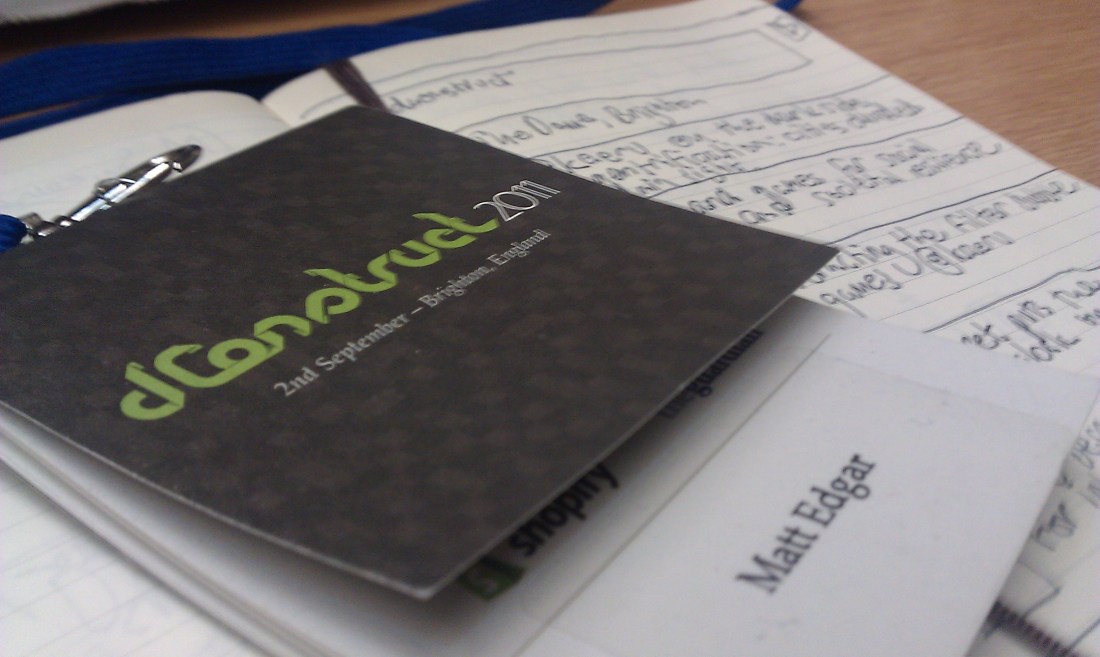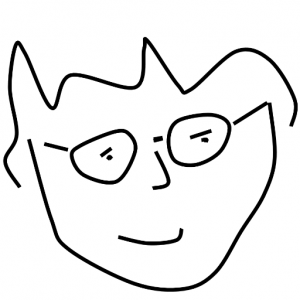
Kelly Goto stands on the stage at Brighton’s Dome, head down, staring at her palm, a perfect mimic of the modern smartphone user, and issues a simple challenge to the dConstruct audience: “Help people to stay upright.”
This is the pivotal moment at which digital design finds itself. After decades training people to gaze into ever more enchanting screens, it’s time for a shake-up, to re-engage with the world around us, once more to look each other in the eye. And it may not be a comfortable experience.
Kevin Slavin dares to ask a roomful of designers why we always look to optics to provide wonder and comfort. Why do we feel the need to mediate the world through a screen, to create (according to a beautiful if only half true story from World War II USA) an upside down backwards town? Why are we not more aware of the dangers that “things that serve the eye trick the eye”? Don’t we remember the beguiling Cottingley Fairies, who showed us long ago that we can’t believe everything we see?
In place of the uncanny valley marketing vision of augmented reality – “We’ll make it magic by putting stickers on everything” – Kevin argues for engagement through behaviour. Pixelated monochrome Tamagotchi inspired more devotion than max polygon count 3d graphics, not by looking real but by exhibiting real traits – being hungry, vulnerable, rewarded and sick. And Kevin should know the power of the invisible: he admits to being spooked by his own code when Crossroads’ Papa Bones swept through the Area/Code studio late one night.
Bryan Rieger and Stephanie Rieger challenge us to engage with the world by releasing stuff that’s not finished, because people prefer it that way. For me their case is marred by over-reliance on the “accelerating pace of change” trope (on which another post follows) but I reckon they have a point about the value of good enough.
As Matt Sheret eloquently puts it: “Hacks scratch the itches that contemporary product design hasn’t caught up with yet.” Time-traveller Matt talks us through the special qualities of things you can put in your pockets – from a Victorian watch to an RFID bike hire key. “RFID is a huge gift for interaction,” he says. I think this is because of its potential as a gap-closing technology that helps link the real world with its digital mirror image.
“Think about the spaces between the experiences you are creating,” says Kelly Goto: to make things that work in the world, we have to understand its people, their rituals and the way they live their lives.
Kars Alfrink makes his own attempt to do this: pointing out the dark side of gentrification. Our cities are divided in plain sight, sharing territory yet blind to each other, like the young Hackney couple enjoying a glass of wine while a tense gang stand-off plays out around them. How do designers get out of their bubble and contribute to a resilient society?
Respect for time and memory surely have a big role to play. Don Norman, in a slide-free talk rich with insight on the state of the user interface art – says we should design memories not experiences: “A memory is a form of augmented reality,” he posits.
And Frank Chimero, who always gives good metaphor, forever replaces my previous best image for our online history. From now of it’s not data exhaust, it’s “walking through snow”. Also Instapaper, Delorean.
Full marks to Frank for the most compelling account I’ve seen of “curation” as applied to web content. Until today I’ve seen “curation” online as a pale, twisted imitation of the real thing, as practiced in museums and art galleries. But Frank put his finger on the thing that makes for good curation – not just hit-and-run picking of stuff but making an educated second pass to transform a collection of objects into a meaningful narrative.
Craig Mod seems to be on similar territory. He talks about data as if it were a living herd, needing to be corraled, then as a field of dead artifacts, in need of “excavation”. What is the shape of the future book? Kilometres high, and chopped up into a million pieces, apparently.
Dan Hon has also dedicated his career to chopping up stories – having followed transmedia storytelling from web 1.0 to 2.0 and beyond. There’s online storytelling the hard way (do it in 2001) and the seemingly easy (do it all on Twitter) though the common thread is good storytelling. Some platforms lend themselves to stories, others do not. Heello is a platform for pretending. Quora is not.
Curiously Dan and Frank both need the same tool for different purposes – something to break out of the blocky file-status-update-album-art tyranny of today’s web services into ways to tell more fluid stories. For Frank it’s about making stories from our real lives, for Dan its creating pretend lives from stories, but in essence both demand the same aesthetic. It’s an aesthetic whose time has come – one that’s authentic without being skeuomorphic. The real world is calling. It wants its designers back.
